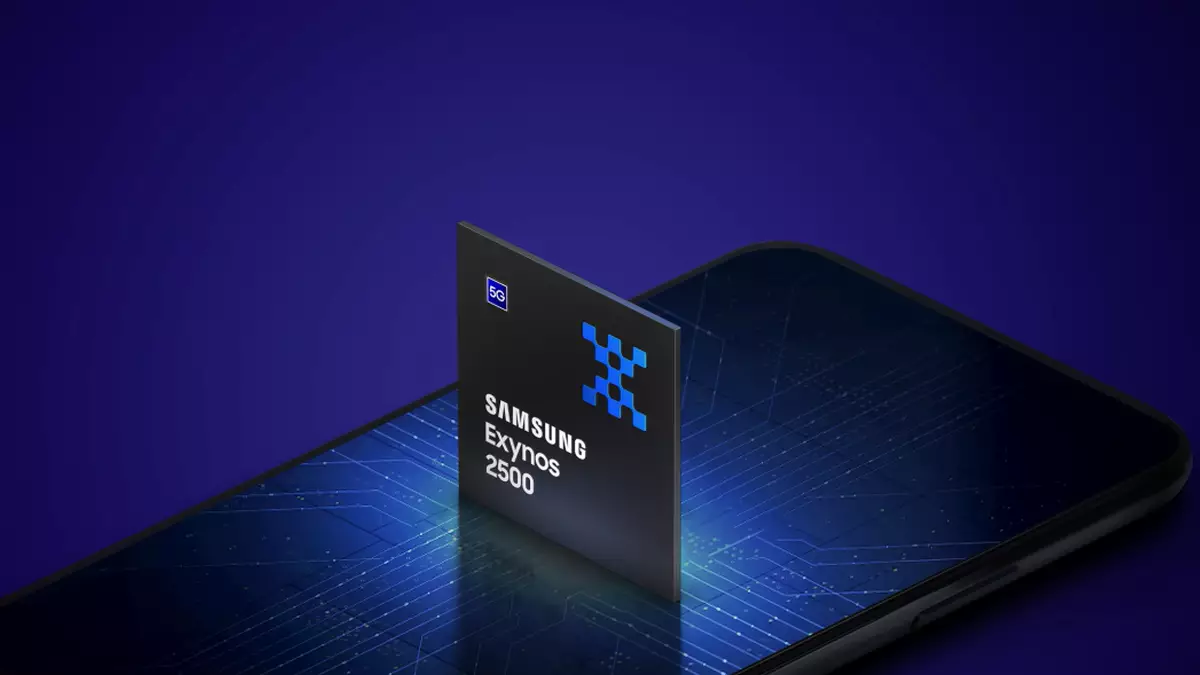The technological race among silicon producers has reached a pivotal moment with the unveiling of Samsung’s Exynos 2500. This innovative chipset marks a significant milestone for the company as it steps boldly into the world of 3nm process technology. Such a sophisticated manufacturing process not only enhances performance but also heralds a future where smartphones are smarter and more capable than ever before. Samsung has unveiled more than just a refined product; they have introduced a transformation that could potentially alter the smart device landscape.
Performance That Tells a Story
At the heart of the Exynos 2500, a 10-core CPU architecture that utilizes a tri-cluster approach showcases Samsung’s commitment to delivering performance that resonates with users. In a world where speed and responsiveness are paramount, Samsung claims up to a 15 percent improvement in CPU performance over its predecessor, the Exynos 2400. While marketing statistics like these often raise eyebrows, one can’t help but wonder if this level of advancement will be felt in real-world applications. The world is watching to see if the Exynos 2500 can deliver tangible benefits or if it will be just another blip in a parade of tech hype.
What truly excites tech enthusiasts—and rightly so—is the leap in AI performance. The boasting of 39 percent enhancements in on-device AI capabilities is not mere bragging rights; it’s an essential evolution. In a smartphone ecosystem crowded with AI-driven applications, an uptick in efficiency translates directly to user experience. Whether it’s processing images, understanding voice commands, or providing intelligent suggestions, the Exynos 2500 promises to add value where it counts.
Satellite Connectivity: A Game Changer
Now, let’s delve into what might be one of the most fascinating features of the Exynos 2500: its ability to connect directly with Low Earth orbit (LEO) satellites. This capability is not just futuristic; it’s practical. In an age where emergencies can arise at any moment, the potential for distress communication via satellite connectivity could save lives. Samsung is positioned to redefine what it means to be connected, blurring the lines between terrestrial limitations and the infinity of space. This move could be a game changer for those living in remote areas or when conventional mobile networks fail.
Yet, one cannot help but approach this innovation with a hint of skepticism. Will this capability be reliable? Will it function seamlessly, or will users find themselves grappling with the limitations of technology that is still somewhat untested in mainstream consumer devices? Only time will tell if this feature is merely a brilliant marketing strategy or a genuine enhancement that adds meaningful utility.
Gaming and Visual Power Unleashed
For gamers, the Exynos 2500 promises a new dawn. Leveraging AMD’s RDNA 3 architecture, the Xclipse 950 GPU touts a jaw-dropping 28 percent faster frame rates for gaming while supporting advanced features like hardware-accelerated ray tracing. The implications for mobile gaming are striking. As the industry pushes the envelope of what is possible on handheld devices, the Exynos 2500 positions itself as a formidable contender in the gaming arena.
Not to be overlooked is the camera capabilities that the chipset can support. With the potential to handle up to a staggering 320-megapixel camera sensor, Samsung is clearly aiming to elevate mobile photography to an unmatched level. Yet again, the reality of such high-resolution photography raises questions. Will consumers see benefits in everyday use, or will this remain a feature that only a niche audience appreciates?
The Connectivity Landscape and Beyond
Addressing connectivity, the Exynos 2500 represents a significant step forward. Supporting 5G (with mind-boggling speeds up to 12.1Gbps), Wi-Fi 7, and Bluetooth 5.4, it embodies the quintessence of modern connectivity standards. Furthermore, the inclusion of USB 3.2 Type-C ensures that devices using this chipset remain relevant for years to come. However, in a world still grappling with inconsistent 5G rollouts, one must question whether the hardware can keep pace with infrastructure developments.
Samsung’s Exynos 2500 is more than just a chipset; it’s an embodiment of ambition and innovation. As we await its debut in the anticipated Galaxy Z Flip 7, one can only hope that it indeed lives up to the lofty promises made by its creators. In a world that demands more from technology than ever before, the Exynos 2500 stands as a mixture of hope and skepticism—a tantalizing glimpse into a powerful future.


Leave a Reply